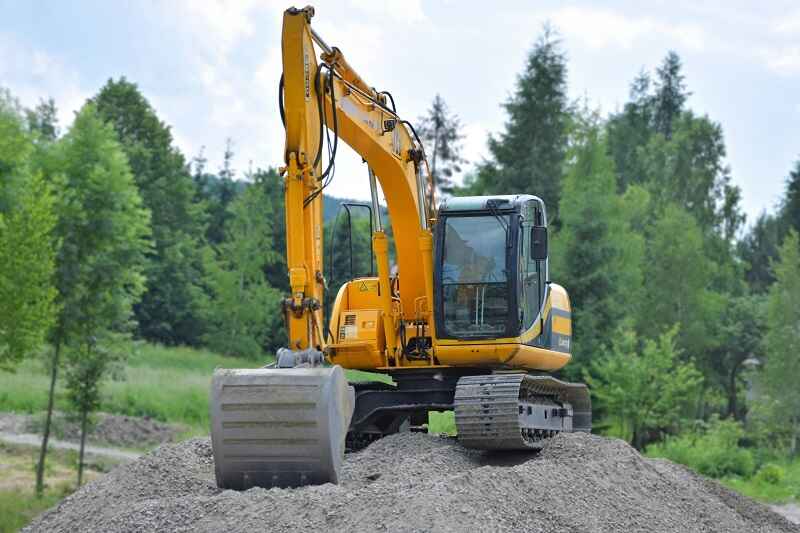Did you know that excavation-related mistakes are one of the leading reasons for project delays in residential construction? Many homeowners focus on design, finishes, or budget but overlook what happens beneath the surface. Excavation sets the stage for everything else in a building project, and when done poorly, it creates costly problems later on. A weak foundation, poor drainage, or unexpected soil movement can all be traced back to incomplete or careless site preparation.
If you’re planning a new home, an addition, or even a large outdoor upgrade, understanding excavation is critical. In this article, we’ll walk through the essentials of excavation in simple, practical terms.
Why Excavation Matters Before Any Build
Excavation is the backbone of any construction project. It sets the ground for stability and safety. Without proper excavation, even the best-designed building will face problems. Foundations can shift, cracks can appear, and drainage issues can develop.
When done right, excavation ensures the soil can support the structure, the slope directs water away, and the land is ready for concrete or framing. This stage is not something to rush. It’s an investment in the long-term strength of your project. Homeowners who understand its importance are less likely to face structural repairs later on.
Hiring Professionals vs. Taking DIY Risks
Some homeowners consider handling excavation on their own to save money. While renting equipment may seem simple, excavation is more complex than it appears. Mistakes in grading, soil handling, or drainage planning often lead to expensive repairs later. Safety is another major concern. Operating excavation equipment without training can result in injuries or property damage.
This is where hiring professionals makes a difference. Experienced crews understand soil conditions, local codes, and safe digging practices. Working with a skilled general contractor ensures that excavation is managed properly from start to finish. Contractors coordinate the work, oversee compliance with regulations, and handle unexpected issues quickly. While hiring professionals may cost more upfront, it often saves money in the long run by preventing costly errors.
Checking Local Permits and Regulations
Before a single shovel hits the ground, permits must be in place. Every town or county has rules about excavation and land use. These rules may include limits on depth, grading requirements, or setbacks from property lines. Skipping permits can lead to fines or, worse, being forced to stop construction mid-project.
Homeowners in Tennessee, for example, may face specific zoning requirements that differ from one county to the next. It’s also important to schedule a utility inspection. Underground water, sewer, gas, and electrical lines must be located before digging. Ignoring this step risks serious accidents and costly damage. By securing permits and following regulations early, you’ll avoid unnecessary delays later in the project.
Soil Testing and Site Assessment
Not all soil is created equal. Clay, sand, rock, and mixed soils react differently when supporting a structure. Some hold water, others drain quickly, and some shift with seasonal changes. Without testing the soil, there’s no way to know if it can handle the weight of a foundation or if it needs reinforcement.
Site assessments usually involve bringing in a professional to evaluate the soil type, depth, and stability. This step may also uncover issues like groundwater or hidden rock layers. If these problems are found after excavation begins, costs can rise quickly. Soil testing before digging helps plan for the right solutions upfront, saving both time and money.
Understanding Utility Marking and Safety
Excavation is not only about preparing the ground but also about protecting what’s already underground. Homes and neighborhoods are crisscrossed with utility lines. Striking one of these lines during excavation can cause power outages, water leaks, or even dangerous gas leaks. It’s also expensive to repair. To minimize these risks, many projects now turn to hydrovac excavation for utility as a safer and highly efficient method.
To avoid this, homeowners or contractors should schedule a utility marking service. This ensures every line is flagged before work starts. It’s a simple step, but it’s one of the most important for safety. Proper marking also prevents accidental damage that could slow down the project for weeks. Safety during excavation protects workers, neighbors, and the homeowner’s investment.
Drainage and Water Management Planning
One of the most overlooked parts of excavation is planning for water flow. If the land doesn’t slope correctly, rainwater can pool near the foundation. Over time, this leads to basement flooding, erosion, and mold problems. Drainage planning during excavation prevents these headaches.
Proper grading directs water away from the building. Sometimes, additional solutions like French drains or sump systems are needed. These features are easiest to install during the excavation stage, before construction begins. Skipping drainage planning may not show problems right away, but it can create major costs down the road. A solid water management plan is a key part of making sure the project lasts.
Excavation may seem like just the first step in construction, but it shapes everything that follows. From soil testing and utility marking to drainage planning and site preparation, each stage is critical to building a safe and durable structure. Cutting corners during excavation often leads to problems that are expensive and difficult to fix later.
Taking the time to get this phase right ensures that your project has the solid foundation it needs to last for years to come.

